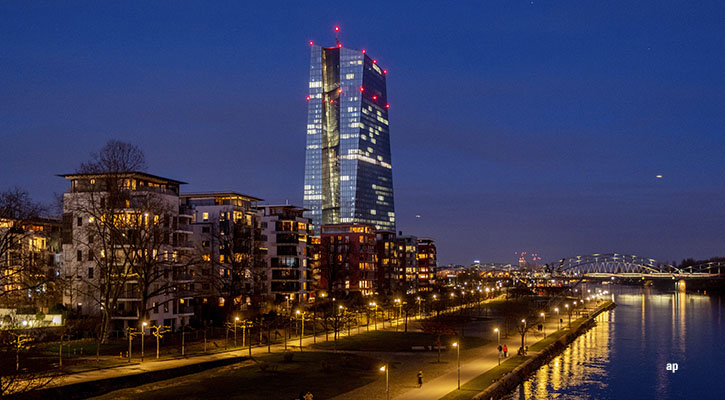Prices are expected to rise 2.5% year-over-year, up slightly from March, according to FactSet consensus estimates, while core inflation is expected to hold steady at 2.7%.
“The increase is likely due to a reversal of volatile items that fell last month, as well as a base effect from the rail subsidy introduced by Germany in May last year,” Algebris Investments' global credit team said in a note on Monday.
According to Eurostat, the largest contributor to euro area annual inflation in April was services (+1.64 percentage points, pp), followed by food, alcohol and tobacco (+0.55 percentage points), non-energy industrial products (+0.23 percentage points) and energy (-0.04 percentage points).
A slight rise in inflation – no need to panic
“After a succession of declines since December, some investors may be disappointed to see the number rising again,” says Michael Field, European market strategist at Morningstar. But he says there are three things to keep in mind:
• Inflation has many components, so it is highly unusual to see a linear decline in the numbers – so far we have been lucky – a small month-on-month increase is not cause for alarm. Concerns remain about European services inflation, but inflation is clearly trending downwards.
• Inflation in Europe is the lowest among major Western economies, a full percentage point lower than in the United States and just 0.4 percentage points below the European Central Bank's target level. With more than 90% of economists surveyed expecting the ECB to cut interest rates in June, even a small rise in inflation like this one would be almost impossible to prevent.
• Core inflation, the inflation measure most closely watched by insiders, is expected to remain steady at 2.7% in May. Core inflation excludes variables such as food and energy prices. The fact that core inflation has halved in just 12 months and remains low is a further indication that the economy is doing well.
What will the ECB do after its June meeting?
Eurozone inflation data will be crucial in predicting what the ECB will do next, specifically when it will cut interest rates.
The main driver of inflation is wages. The ECB's negotiated wage tracker showed wages rising to 4.7% year-on-year in the first quarter of 2023 from 4.5% in the fourth quarter. The data beat analysts' expectations. “The surprise was driven by Germany's large bonus payments, which are an increasingly important part of German wage negotiations and cannot be completely ignored,” an Algebris Investments note explained.
“Wages growth is expected to remain high and unstable in 2024,” the ECB said in a blog post. This “complicates the outlook for rapid rate cuts by the ECB,” according to Algebris Investments. Indeed, economists are adjusting their expectations for rate cuts.
“Given that interest rates are so high right now, we will likely see the ECB start cutting rates in June,” said Tomasz Wieradek, chief European economist at T. Rowe Price, who predicts the ECB will skip July and cut rates two or three more times this year.

